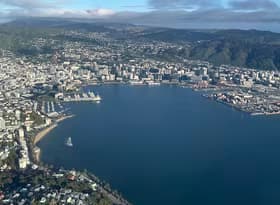Regional job creation and destruction
I have previously written about how changes in employment are the tip of the iceberg, and don’t capture the full extent of labour market dynamics. Here, I look at measures of regional job creation and destruction to get a sense of how regions fared differently during 2020, in what was a challenging year for the New Zealand economy.
Recently released data from the Linked Employee Employer Dataset (LEED) gives us further insights into how different regional labour markets fared in 2020 when COVID-19 first arrived in New Zealand and the economy went into a prolonged lockdown.
Stats NZ require several months to collect then process LEED data, which is why it is always at least one year out of data. However, in sacrificing timeliness to get insights into detailed labour market dynamics not available from any other dataset.
A hallmark of well-functioning labour market
Across the total economy, the rate of job creation in 2020 (jobs created as a percentage of total filled jobs) was just under 7%. The rate of job destruction was very similar. Actual job creation and destruction rates might therefore be higher. This is because LEED compares jobs on the 15th day of the middle month of each quarter – the reference date. A job that exists in one quarter but not the next is counted as a job destroyed. Vice versa for jobs created. Jobs that exist for less than three months might not be picked up on any reference date and therefore go uncounted.
Job creation and destruction are characteristics of a well-functioning labour market. Businesses need to adapt their workforces to changing economic conditions. That’s not to downplay the loss of income and stress that employees experience when they lose their jobs. Further characteristics of a well-functioning labour market include workers without jobs having the right skills to fill new positions, or the opportunity to reskill if they don’t have the necessary skills. Recently introduced government subsidies for vocational training such as the Trades Training and Apprenticeship Fund and Apprenticeship Boost were partly about enabling employers to retain their apprentices and trainees, and partly about making it easier for people to retrain.
Things become problematic when the rate of job destruction exceeds the rate of job creation by some margin and/or over an extended period of time, leaving people out of work and with few opportunities to find a new job.
Disparities in regional economic performance can also be problematic. As shown in chart 1 below, regions with large tourism sectors such as Otago and the West Coast suffered most in 2020. Ideally, people who lost their jobs in those regions were able to move to other regions where opportunities were more plentiful. People’s ability and willingness to move regions to find work depends on their personal circumstances. It tends to be easier for people who rent rather than own a home, and people who don’t have children.
Regional variation
Chart 1 shows that the rate of job creation and job destruction varies across regions. Much of this variation will be because of the industry make-up of each regional economy. The agriculture and hospitality sectors have particularly high rates of job creation and destruction because their workforces are subject to seasonal variations in demand. The large agricultural sectors in Bay of Plenty, Gisborne, Hawke’s Bay and Tasman, go a long way to explaining these regions’ high overall rates of job creation and destruction.
Chart 1 also shows that in 2020 most regions saw more jobs created than destroyed, which resulted in a net increase in employment. The exceptions are Auckland, which was in lockdown longer than other regions, and much of the South Island: most notably the West Coast and Otago which have large tourism sectors and suffered most when borders were closed to international tourists.
Government support such as the Wage Subsidy, was effective in keeping people in employment, even if in some instances employers were forced to cut their employees’ hours. The subsequent economic recovery, and re-emergence of deep skill shortages (if they ever went away), also reaffirms the importance of holding on to good people because they can be hard to find again once you let them go.
2020 was a tough year
Don’t let chart 1 fool you; 2020 was a tough year. Across every region, the rate of job creation fell in 2020 compared with 2019 (see chart 2). It’s just that across most regions, the rate of job destruction also fell (see chart 3).
Even among those regions where job destruction was greater then job creation in 2020, different dynamics were playing out. West Coast experienced a rise in the rate of job creation in 2020, but a much bigger rise in the rate of job destruction. Otago experienced a fall in the rate of job creation in 2020, and a rise in the rate of job destruction.
This time next year we will be able to look at job creation and destruction in 2021. What’s clear from the charts above is that relatively small changes in the rate of job creation and destruction can make the difference between employment growth and decline in a region.
Given that widespread reports of skill and labour shortages started to emerge last year I expect job creation easily outpaced job destruction in most regions last year. Perhaps job creation was constrained in some areas as employers were unable to fill vacant positions. Otago region may have remained the exception as it would require quite a significant increase in job creation and/or decrease in job destruction to turn the tide back towards employment growth.





















